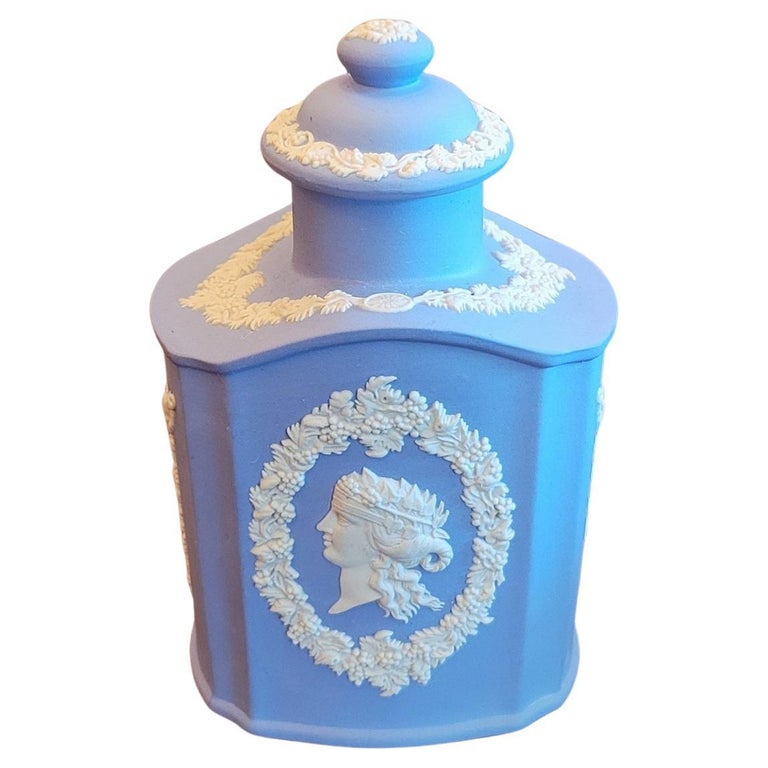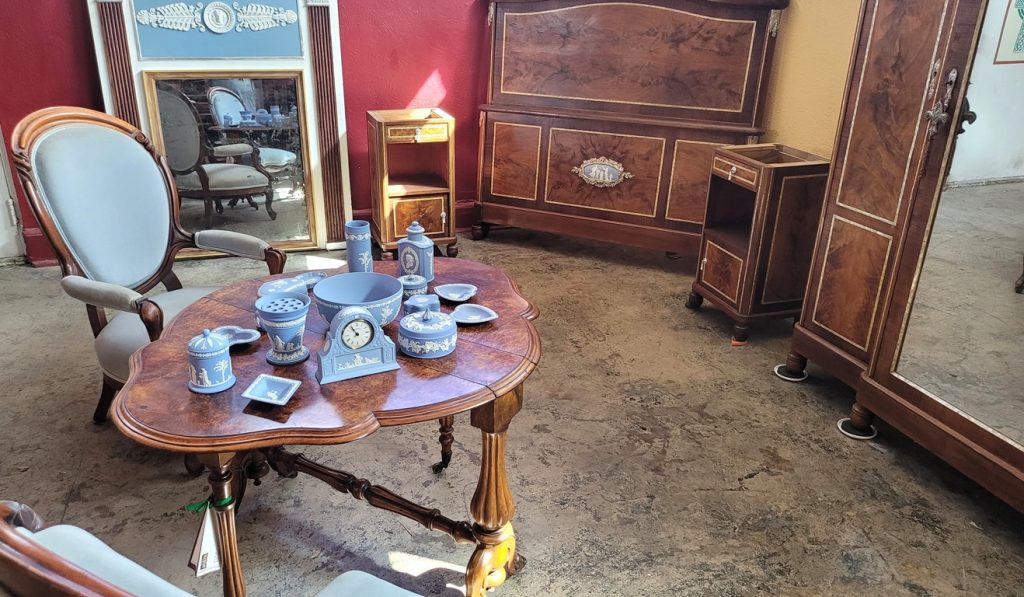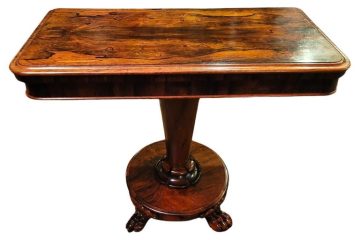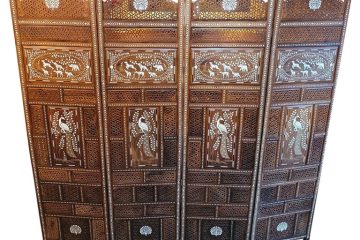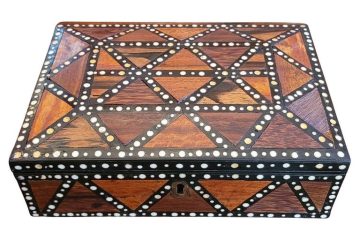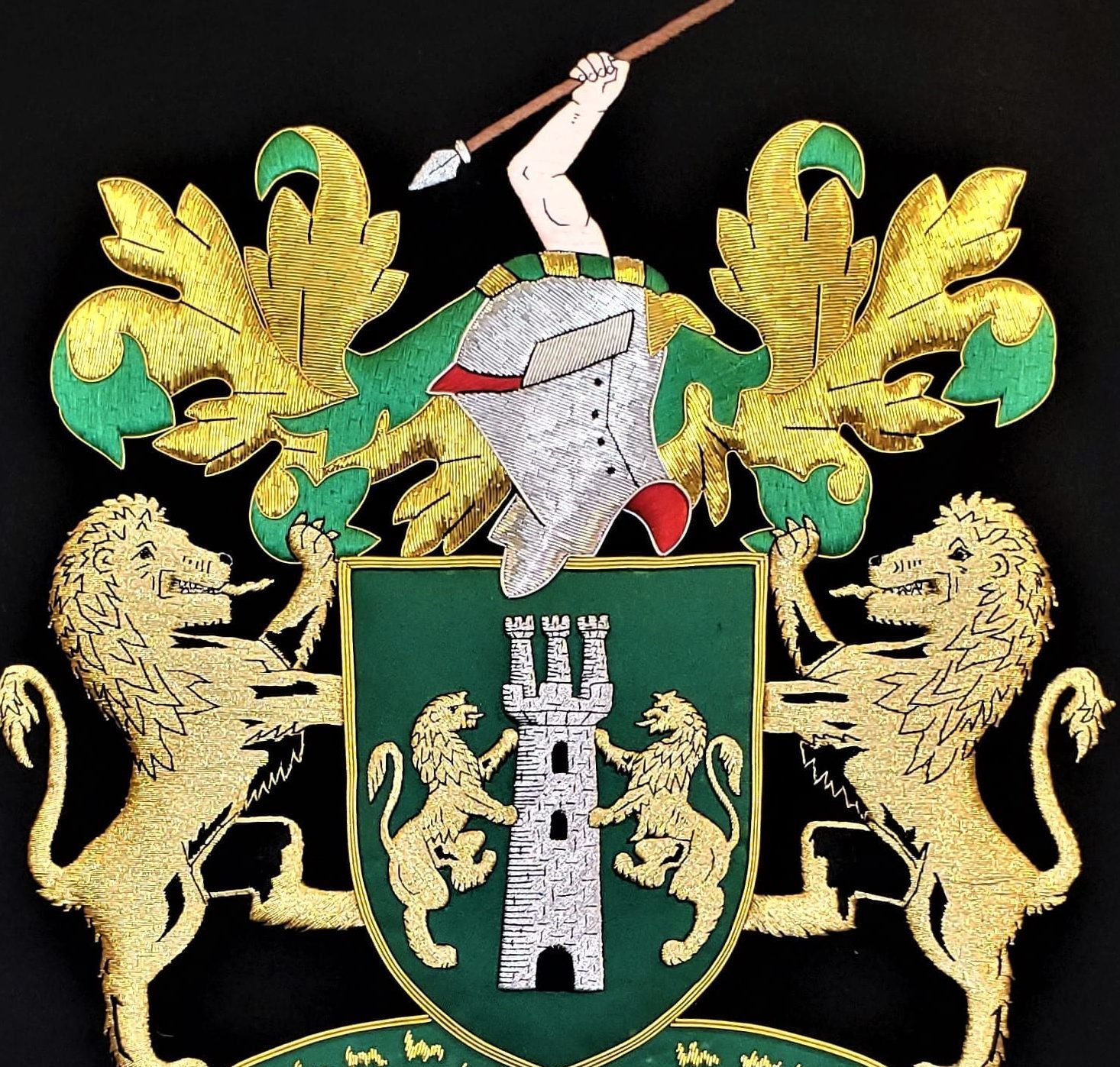PRESENTING A GORGEOUS Wedgwood Jasperware Pale Blue Lidded Tea Caddy.
Made by Wedgwood in England circa 1950-60 and fully and properly marked/stamped on base.
Marked: “Wedgwood, Made in England …. “R”.
6 inches tall lidded caddy with neoclassical cameo reliefs.
Based upon a much earlier tea caddy design from the 1770’s.
The front and back of the caddy base have cameo reliefs of (different) goddesses within a wreath of vines and grapes.
The base sides have draping vine and grape reliefs, as does the top of the base around the lid cover.
The lid is likewise adorned with cameo reliefs of vines and grapes with the rounded finial likewise decorated.
In very good original condition, save one minor repair to the inside of the lid/stopper which is not very noticeable and doesn’t really detract from the piece, but, we have nonetheless reflected this repair in the reduced pricing.
Jasperware, or jasper ware, is a type of pottery first developed by Josiah Wedgwood in the 1770s. Usually described as stoneware, it has an unglazed matte “biscuit” finish and is produced in a number of different colours, of which the most common and best known is a pale blue that has become known as “Wedgwood blue“. Relief decorations in contrasting colours (typically in white but also in other colours) are characteristic of jasperware, giving a cameo effect. The reliefs are produced in moulds and applied to the ware as sprigs.
After several years of experiments, Wedgwood began to sell jasperware in the late 1770s, at first as small objects, but from the 1780s adding large vases. It was extremely popular, and after a few years many other potters devised their own versions. Wedgwood continues to make it into the 21st century. The decoration was initially in the fashionable Neoclassical style, which was often used in the following centuries, but it could be made to suit other styles. Wedgwood turned to leading artists outside the usual world of Staffordshire pottery for designs. High-quality portraits, mostly in profile, of leading personalities of the day were a popular type of object, matching the fashion for paper-cut silhouettes. The wares have been made into a great variety of decorative objects, but not typically as tableware or teaware. Three-dimensional figures are normally found only as part of a larger piece, and are typically in white. Teawares are usually glazed on the inside.
In the original formulation the mixture of clay and other ingredients is tinted throughout by adding dye (often described as “stained”); later the formed but unfired body was merely covered with a dyed slip, so that only the body near the surface had the colour. These types are known as “solid” and “dipped” (or “Jasper dip”) respectively. The undyed body was white when fired, sometimes with a yellowish tinge; cobalt was added to elements that were to stay white.
Link: https://en.wikipedia.org/wiki/Jasperware
Wedgwood Jasperware Pale Blue Lidded Tea Caddy
Provenance: From a Fine Mississippi Estate and originally acquired in England in the early 1970’s.
Condition: One minor repair to inside of lid/stopper, but otherwise very good.
Dimensions: 6 inches tall, 4 inches wide and 3 inches deep
SALE PRICE NOW:$440




















